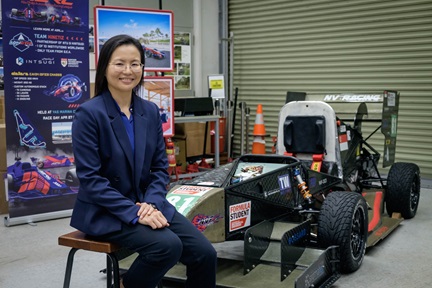Stretching energy-harvesting limits
3D structures help polymers stretch more than normal to produce electricity for sensing

Thin films made of piezoelectric polymers can generate electricity when pressed or stretched, becoming ideal energy harvesting materials to power wearable electronic devices sustainably.
However, the low stretchability of certain piezoelectric polymers like polyvinylidene difluoride (PVDF) limits their electricity-producing capability.
In a breakthrough study, scientists led by Prof Lee Pooi See, Vice President (International Engagement) from NTU’s School of Materials Science and Engineering, addressed this problem with 3D-printed auxetic structures – structures with repeating weave-like patterns.
The research team layered their 3D-printed auxetic structures made of urethane diacrylate – often used as a protective coating for electronic devices – over a thin film of PVDF and gold electrodes to create an energy-harvesting patch.
The auxetic structures form a dome-shaped curve when bent, enabling the PVDF to stretch more than usual. This allows the material to produce electricity when the thin patch is bent. The team’s experiments showed that the bent patch produced a voltage 8.3 times higher than a patch without auxetic structures.
Applying the innovative patch to different body joints that bend, like the elbow and ankle, the team found that the patch produced different voltages when bent at different angles. This finding opens avenues for developing self-powered devices for soft robotics sensing and medical diagnostics to monitor a person’s joint motion and gait.
---
Find out more about the research “3D printed auxetic structure-assisted piezoelectric energy harvesting and sensing” in Advanced Energy Materials (2023), DOI: 10.1002/aenm.202301159.
The article appeared first in NTU's research & innovation magazine Pushing Frontiers (issue #23, March 2024).




.tmb-listing.jpg?Culture=en&sfvrsn=29c7e020_1)
.tmb-listing.jpg?Culture=en&sfvrsn=55153609_1)

